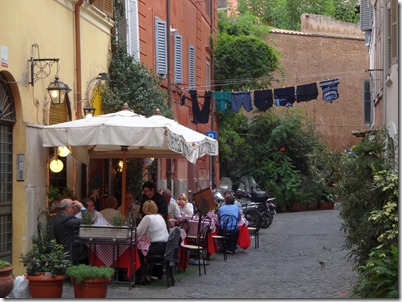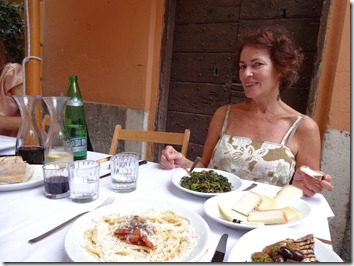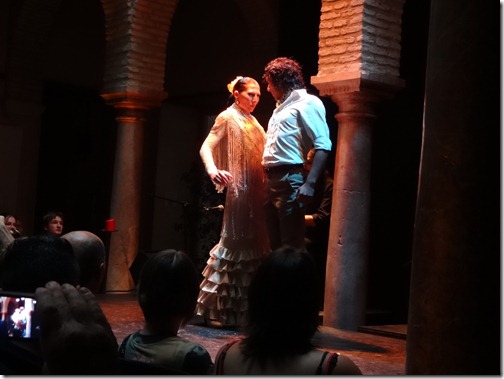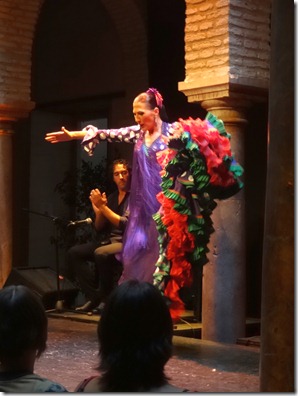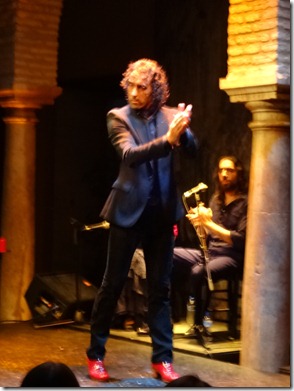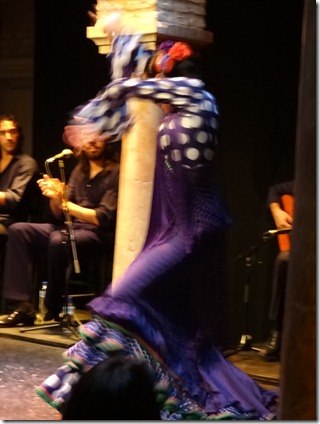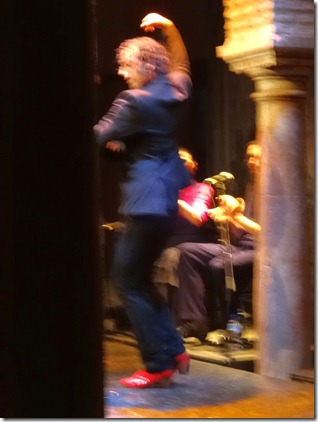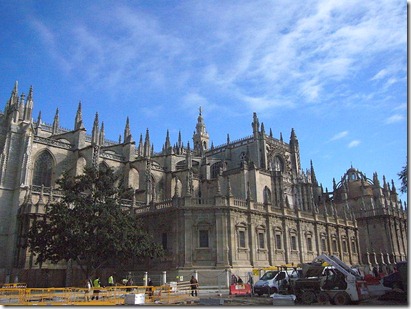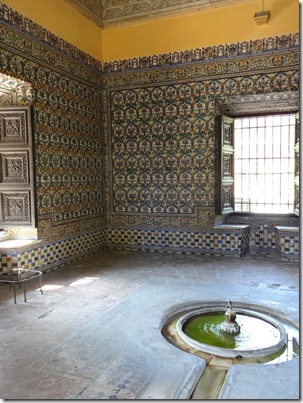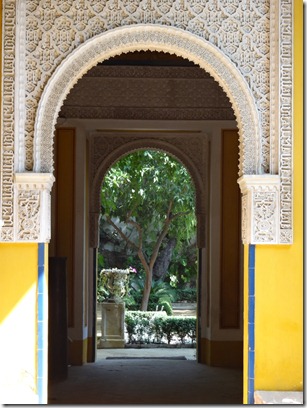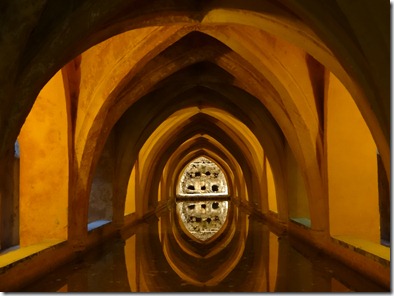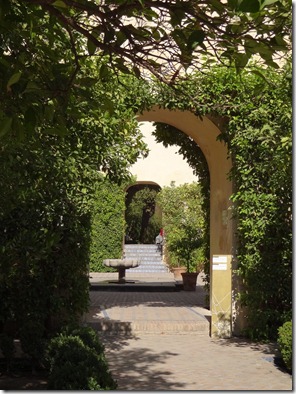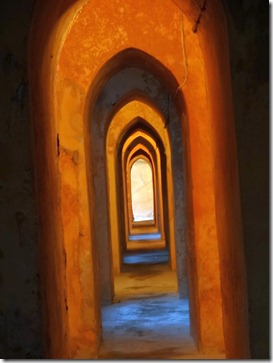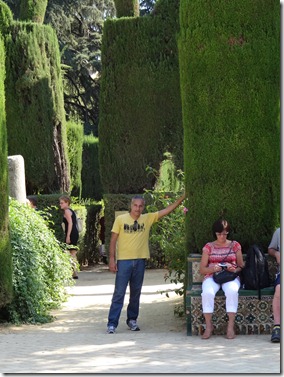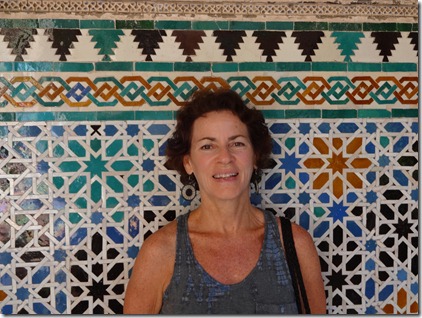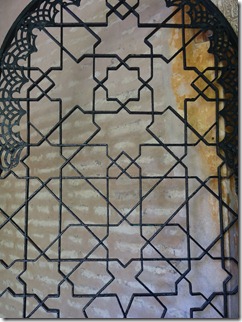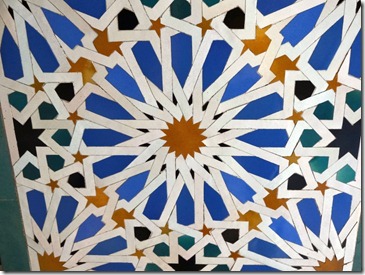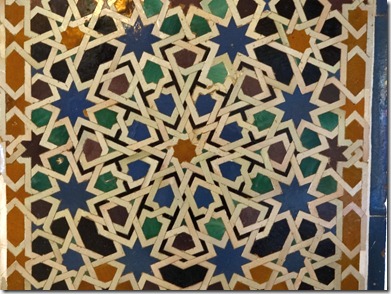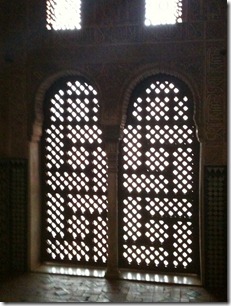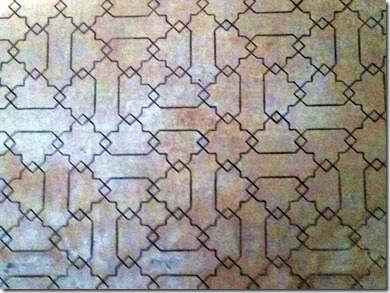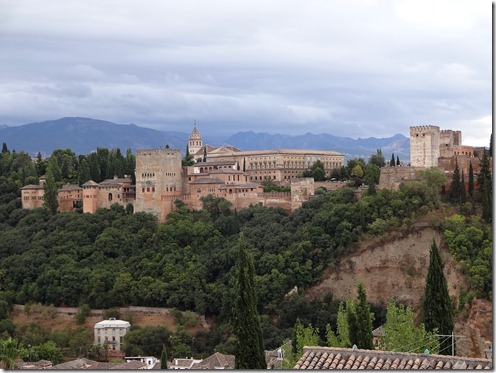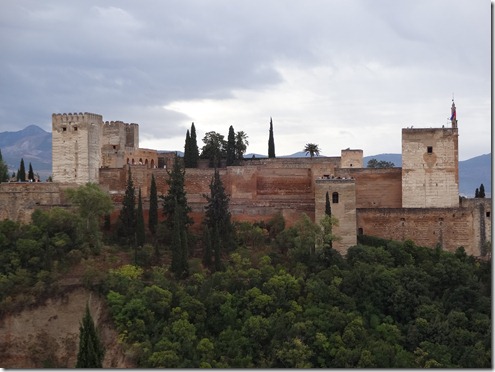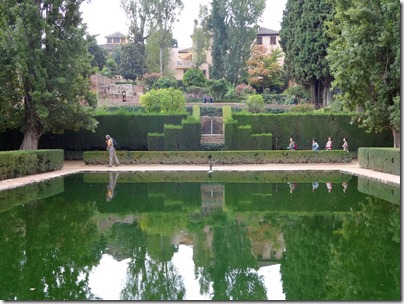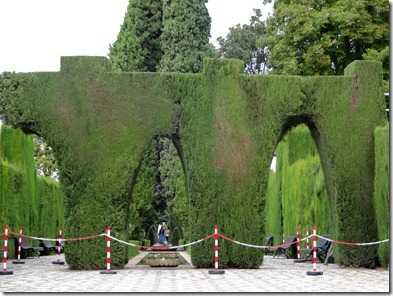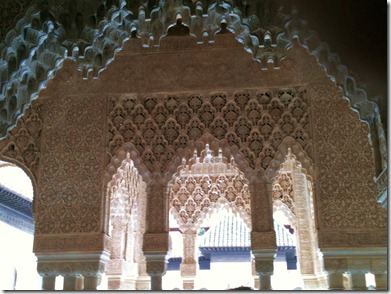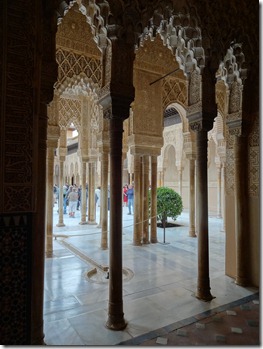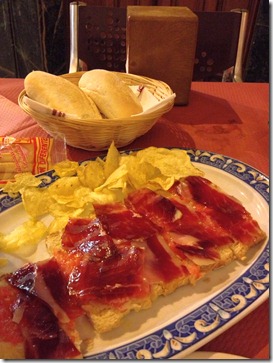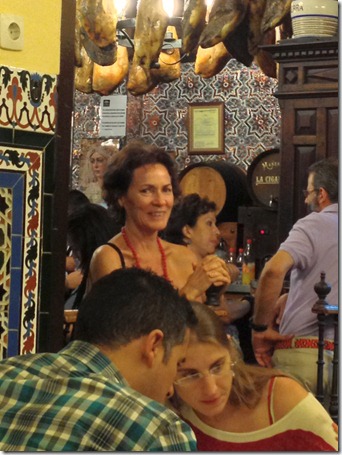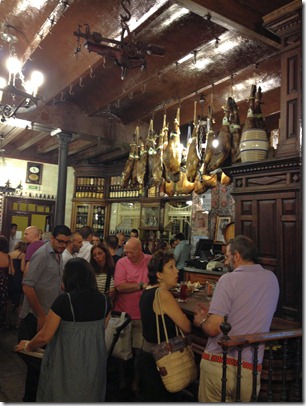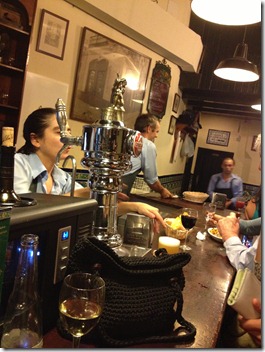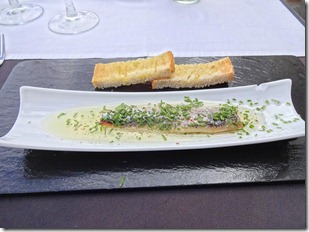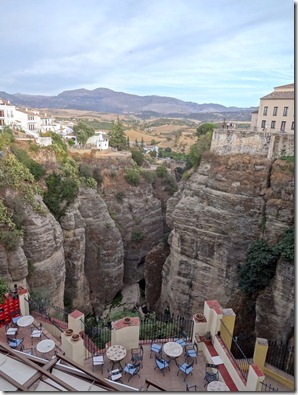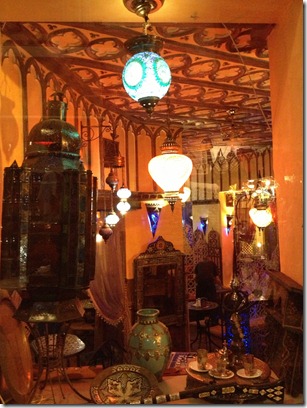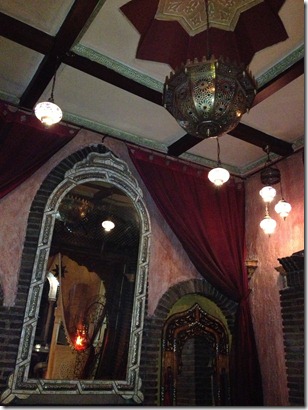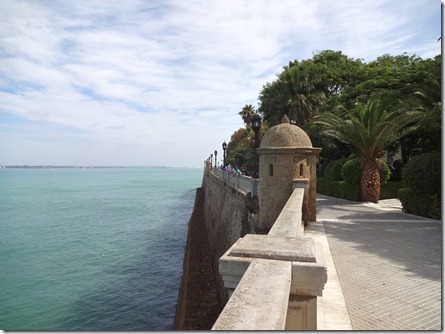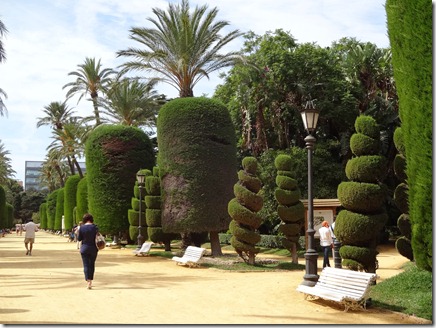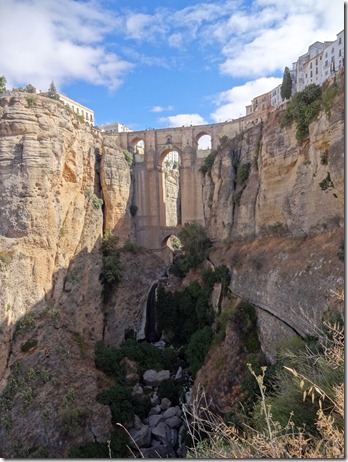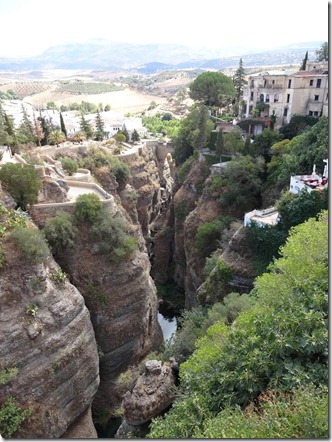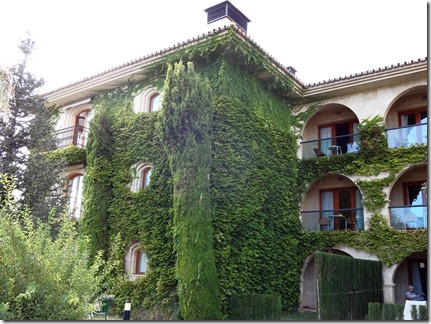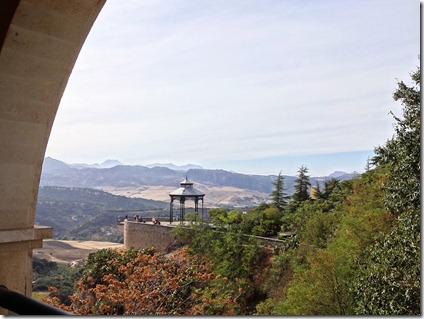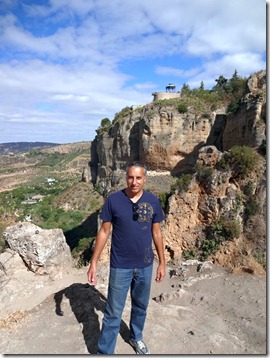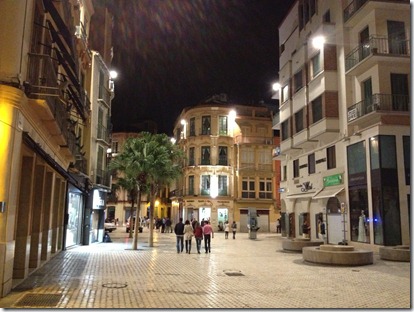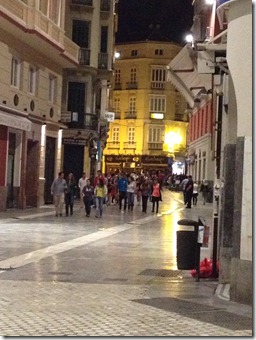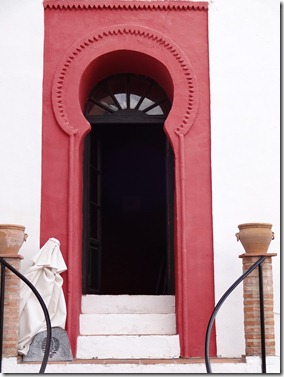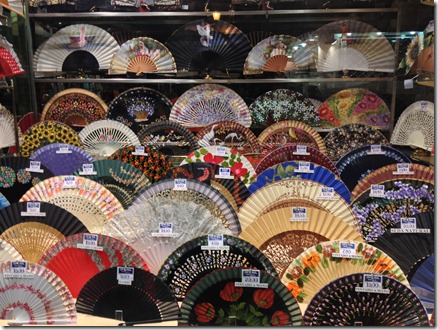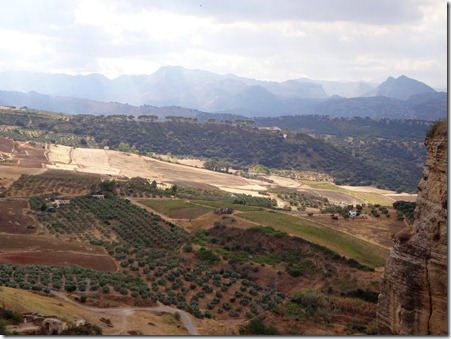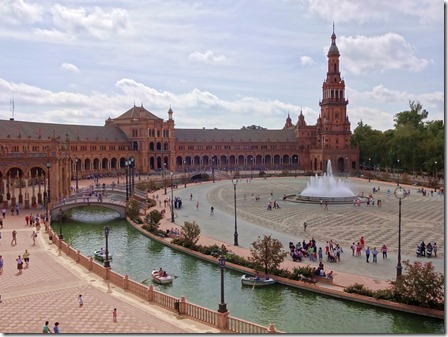 Newton and I flew from Malaga to Dublin, Ireland, where for one night we mingled with the hordes of revelers in the Temple Bar neighborhood of the city, known for tourists and Guinness Stout. Newton was connecting to Poland the next morning for business while I had three days to go, so we made the most of a heady pub. We miraculously garnered two barstools, tried a small Guinness - which we still didn’t like despite the proper setting – settled on an old favorite, Harp, and took in the show! Our friendly bartender could, honestly, fill three pints at three draught spigots with one hand while totaling up a check with the other. The crowd was a happy international mix that overflowed into the streets with those from the other pubs. The Irish know how to share their personal charm and that of their great city, and share they do.
Newton and I flew from Malaga to Dublin, Ireland, where for one night we mingled with the hordes of revelers in the Temple Bar neighborhood of the city, known for tourists and Guinness Stout. Newton was connecting to Poland the next morning for business while I had three days to go, so we made the most of a heady pub. We miraculously garnered two barstools, tried a small Guinness - which we still didn’t like despite the proper setting – settled on an old favorite, Harp, and took in the show! Our friendly bartender could, honestly, fill three pints at three draught spigots with one hand while totaling up a check with the other. The crowd was a happy international mix that overflowed into the streets with those from the other pubs. The Irish know how to share their personal charm and that of their great city, and share they do.
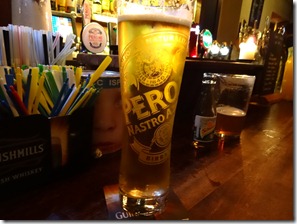
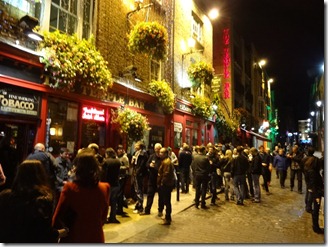
THREE PERFECT DAYS
DAY ONE: I walked from the hotel on Saint Stephen’s Green towards the River Liffey, which divides the city north and south, happening upon the old Gaiety Theatre almost immediately. I had already decided that I did not need a “Leopold Bloom” tour of Dublin – the Dublin odyssey of the protagonist of James Joyce’s Ulysses on a fictional June 16, 1904 – even though I had finally read Ulysses only in the last few years; however, I did stop in my tracks when I saw on the theater marquee that a stage adaptation of James Joyce’s short stories, The Dubliners, was ending that day. The matinee was starting in half an hour. I got a ticket.
In this theater piece, excerpts of funny stories and stories typifying Irish life and Irish problems – drunken men letting someone down or beating their wives – were dramatized with minimal set changes and multiple roles for the actors. I was riveted by the level of acting - to which we have sometimes been treated in the finest USA cable series. John Houston’s last film (1987) was a gorgeous adaptation of one of the stories, The Dead. This theater performance ended with the last scenes from The Dead: The wife sings a haunting traditional Irish song at the party, and this actress vocalist put us under a spell with her wistful, evocative voice. The wife then becomes inconsolably grief-stricken remembering an early admirer, Michael Furey, who used to sing the same song. She sobs to her husband, while we, the audience, become utterly still, how she spurned the young man as he was dying, how he no longer wished to live. Her cold and distant husband comes to envy the ardor of that life cut short. We are all transfixed by the actors’ command, by the poignancy of the wife’s agony on a desolate night. The matinee ends with the husband’s spoken thoughts:
“A few light taps upon the pane made me turn to the window. It had begun to snow again. I watched sleepily the flakes, silver and dark, falling obliquely against the lamplight. The time had come for me to set out on my journey westward. Yes, the newspapers were right: snow was general all over Ireland. It was falling on every part of the dark central plain, on the treeless hills, falling softly upon the Bog of Allen and, farther westward, softly falling into the dark mutinous Shannon waves. It was falling, too, upon every part of the lonely churchyard on the hill where Michael Furey lay buried. It lay thickly drifted on the crooked crosses and headstones, on the spears of the little gate, on the barren thorns. My soul swooned slowly as I heard the snow falling faintly through the universe and faintly falling, like the descent of their last end, upon all the living and the dead.”
No one in the theater was breathing. There was no clapping. We were utterly stunned there in our theater seats, facing the truth by which only moments in life itself or great art can wake us. I will never forget that chill-bumped moment, that beat before the place exploded and we were supposed to go out into the urban afternoon and hold on to our temporary transformation for what duration we could.
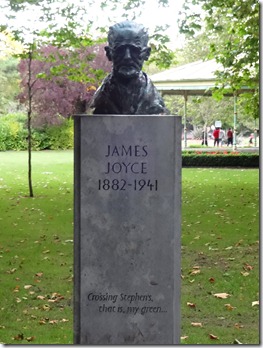 I entered Saint Stephen’s Green. Coming up immediately on my left was this bust of James Joyce with the inscription: “Crossing Stephen’s, that is, my green…”
I entered Saint Stephen’s Green. Coming up immediately on my left was this bust of James Joyce with the inscription: “Crossing Stephen’s, that is, my green…”
After being so moved in the theater, studying the unique Irish afternoon light on the treetops was all I was good for.
I returned each day to the Green for the beauty and the homage.
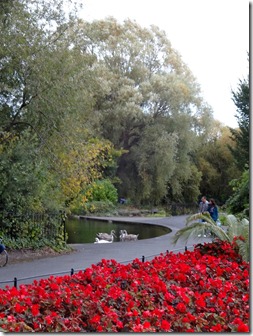
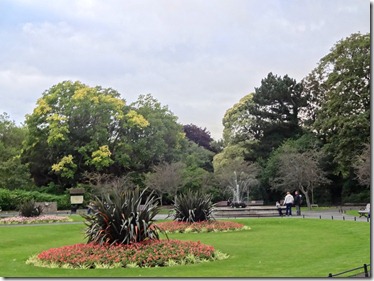
 But now they drift on the still water,
But now they drift on the still water,
Mysterious, beautiful;
Among what rushes will they build,
By what lake's edge or pool
Delight men's eyes when I awake some day
To find they have flown away?
- William Butler Yeats, “The Wild Swans at Coole”
DAY TWO: I had pre-booked a tour to an ancient mound in the countryside, Newgrange, near the River Boyne. I can highly recommend Mary Gibbons Tours for fellow history buffs, as Mary lived up to her internet description beautifully. I did not even mind that she repeated herself often, also being “of a certain age.” She is a walking encyclopedia of Irish history, and Irish history has many stories to tell. I was also curious about my own Scots-Irish blood from my mother’s McCracken side. Mary described this group: James I of England lured Scottish immigrants to northern Ireland in the early 1600’s to insure that the landowners and tenants around Ulster were Protestant. Many of these Scots-Irish Presbyterians began immigrating to the thirteen American colonies in the eighteenth century, again for religious reasons. They are represented in the USA by frontiersman Davy Crockett, several presidents, and the genetically deficient of Appalachia!
I was also curious, being a fan of Yeats, to hear the dramatic tales, the “terrible beauty” of the Irish struggle for independence from England in the early 20th century.
Just as I was pro-Moorish kings and anti-Catholic Inquisition in Andalusia, I could not help being pro-ancient Celts and anti-Saint Patrick as I traversed the green, green countryside. I have heard it said that like many Native Americans, the Celts turned to drink upon losing their cosmology. And there were no snakes on the green isle; Saint Patrick was driving out the pagan nature-worshipping tradition to establish Catholicism in the fifth century. I admit that the history of murderous popes, the institutional propagating of ignorance, the excommunication of Liberation Theologists, pedophile priests, and most recently, the silencing of American nuns by the Vatican for focusing too much on poverty and economic injustice instead of abortion and same-sex marriage…have made me a bit cynical against the Catholic hierarchy. No offence intended here to the rank-and-file.
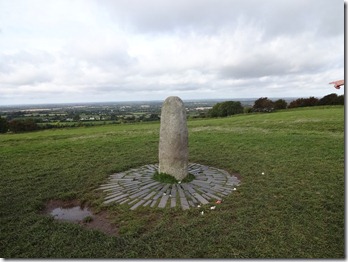 Our first stop was at the Hill of Tara, home to the earth goddess, Maeve, and coronation site of hundreds of Celtic High Kings. They were crowned at this “stone pillar” after symbolically marrying Maeve. There is a church nearby, which I declined to photograph, though the graveyard beside it was too beautiful to resist. I also opted to photograph the phallic stone over the statue of Saint Patrick.
Our first stop was at the Hill of Tara, home to the earth goddess, Maeve, and coronation site of hundreds of Celtic High Kings. They were crowned at this “stone pillar” after symbolically marrying Maeve. There is a church nearby, which I declined to photograph, though the graveyard beside it was too beautiful to resist. I also opted to photograph the phallic stone over the statue of Saint Patrick.
The surrounding beauty is precisely the quintessential Irish countryside that I had set out to see.

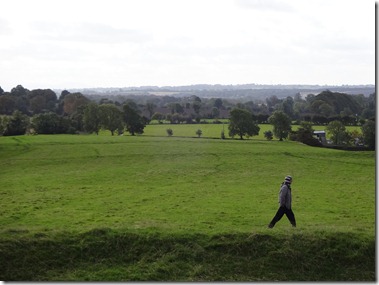

The Hill of Tara was damaged over the years, including in 1901 when British scholars of Israel came seeking the Arc of the Covenant, believing that the Irish were part of the Lost Tribes of Israel. Spielberg hasn’t made that movie yet.
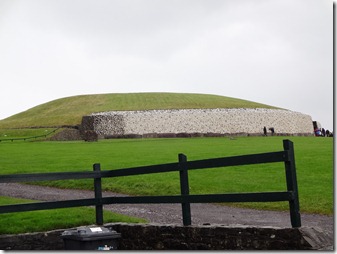 NEWGRANGE, the mound built in 3,200 B.C., older than Stonehenge, predates the arrival of the Celts from Europe by 2,600 years. It is a Neolithic structure built of stones without any mortar or other adhesive material. Those people knew how to stack! No cameras are allowed inside, but a passageway leads to a domed stone room with three bone depositories, clearly associating the mound with burial rituals. More fascinating about these Neolithic geniuses is the astronomical significance of Newgrange. Sunrise on the Winter Solstice sends the sun’s beam through the opening above the door – this clears the path from the horizon - down the corridor to illuminate the stone room. There is an annual lottery to determine which lucky ten people on each of several frigid mornings surrounding the Solstice get to travel to Newgrange and witness this 5,000-year-old wonder…weather permitting! There were almost 30,000 lottery applications submitted for the 2012 Solstice. The earth’s precession over the millennia – degrees of rotation of the axis as it moves around the zodiac – has altered where the beam hits the back wall, though the sunlight’s journey through the passage continues.
NEWGRANGE, the mound built in 3,200 B.C., older than Stonehenge, predates the arrival of the Celts from Europe by 2,600 years. It is a Neolithic structure built of stones without any mortar or other adhesive material. Those people knew how to stack! No cameras are allowed inside, but a passageway leads to a domed stone room with three bone depositories, clearly associating the mound with burial rituals. More fascinating about these Neolithic geniuses is the astronomical significance of Newgrange. Sunrise on the Winter Solstice sends the sun’s beam through the opening above the door – this clears the path from the horizon - down the corridor to illuminate the stone room. There is an annual lottery to determine which lucky ten people on each of several frigid mornings surrounding the Solstice get to travel to Newgrange and witness this 5,000-year-old wonder…weather permitting! There were almost 30,000 lottery applications submitted for the 2012 Solstice. The earth’s precession over the millennia – degrees of rotation of the axis as it moves around the zodiac – has altered where the beam hits the back wall, though the sunlight’s journey through the passage continues.

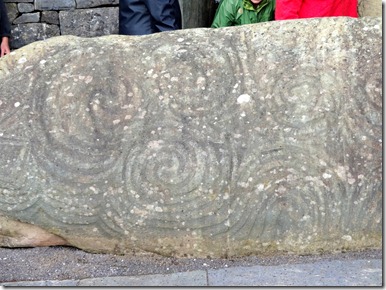
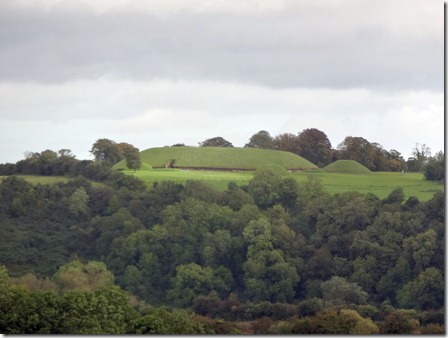 The spiral relief at the entrance is magnificent.
The spiral relief at the entrance is magnificent.
I stupidly set out on the tour without an umbrella, declining the extra weight in my bag while admiring the morning sunshine. I was roundly soaked and shivering at Newgrange. These were the only three days of our trip that could possibly encounter cooler fall weather, so I had not packed a coat. I gathered the soaking wool shawl around the soaking knit jacket and later stuck my head under the hand dryer in the bathroom to dry my dripping hair. Best part: did not catch a cold!
Mary Gibbons explained something that made sense to me: the Celts passed a rich oral tradition down through centuries; when reading and writing arrived in Ireland in the 4th century A.D., “they took to it like a fish to water.” I am clearly partial to their literature, poetry and drama - the way this Celtic oral tradition radiates through it all in such a vibrant way. My Irish friend Steve in Natal loaned me a crazy Flan O’Brian novel which I brought on the trip, The Third Policeman…a bizarre vision of hell wrapped in extraordinary language. Full disclosure: I am also partial to the literary tradition of the Brits (my father’s side!).
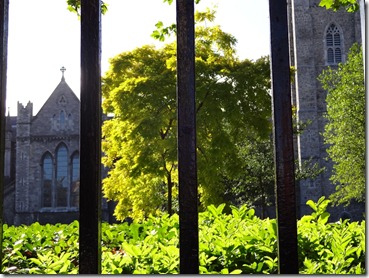 DAY THREE: A line appeared in a TripAdvisor.com review of one prospective Dublin hotel or another: “Don’t miss the overlooked treasure of the Chester Beatty Library at Dublin Castle.” My prospects on my last day included visiting the medieval Book of Kells at Trinity University; visiting Saint Patrick’s Cathedral; catching a commuter train to visit the craggy coast…or pursuing that little note in the hotel review. It helped that the Chester Beatty Library was a lovely, sight-filled walk from my hotel and the only free offering. My choice coincidentally led me past Saint Patrick’s AND offered not only some of the most beautiful medieval illuminated manuscripts of the Gospels in existence, but Paul’s letters to the Corinthians on shards of papyrus from the year 200, as well! Yet another miraculous day in Dublin was mine.
DAY THREE: A line appeared in a TripAdvisor.com review of one prospective Dublin hotel or another: “Don’t miss the overlooked treasure of the Chester Beatty Library at Dublin Castle.” My prospects on my last day included visiting the medieval Book of Kells at Trinity University; visiting Saint Patrick’s Cathedral; catching a commuter train to visit the craggy coast…or pursuing that little note in the hotel review. It helped that the Chester Beatty Library was a lovely, sight-filled walk from my hotel and the only free offering. My choice coincidentally led me past Saint Patrick’s AND offered not only some of the most beautiful medieval illuminated manuscripts of the Gospels in existence, but Paul’s letters to the Corinthians on shards of papyrus from the year 200, as well! Yet another miraculous day in Dublin was mine.
 Chester Beatty was an Irish-American mining magnate who immigrated to England in 1933 and was later made an honorary Irish citizen in 1957. He applied his huge fortune to the acquisition of the world’s rarest books, emphasizing quality above all else. The collection is considered the finest private library of the 20th century. This gem of a museum was designated European Museum of the Year in 2002. It is precisely the size one can master within the window of lower back comfort and engrossed concentration duration. One floor displays historic writings and bindings from European, Middle Eastern and Asian sources; the other floor displays sacred texts from Christianity, Judaism, Islam, Buddhism, Hinduism and the other Asian religions.
Chester Beatty was an Irish-American mining magnate who immigrated to England in 1933 and was later made an honorary Irish citizen in 1957. He applied his huge fortune to the acquisition of the world’s rarest books, emphasizing quality above all else. The collection is considered the finest private library of the 20th century. This gem of a museum was designated European Museum of the Year in 2002. It is precisely the size one can master within the window of lower back comfort and engrossed concentration duration. One floor displays historic writings and bindings from European, Middle Eastern and Asian sources; the other floor displays sacred texts from Christianity, Judaism, Islam, Buddhism, Hinduism and the other Asian religions.
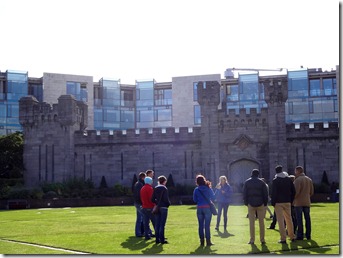 It is hard to say what stands out, as the two floors walk one through the ages and the cultures in simply miraculous ways. The incredibly perfect calligraphy and miniature painting of Christian illuminated manuscripts, ancient Torahs (one featuring nearly imperceptible ‘rice-sized’ script), illuminated Korans, Persian tales of love, Chinese and Japanese narrative scrolls are something that astounds (no white-out, erasers or deletes). It is clear why the execution of the sacred texts, in particular, was considered a sacred task.
It is hard to say what stands out, as the two floors walk one through the ages and the cultures in simply miraculous ways. The incredibly perfect calligraphy and miniature painting of Christian illuminated manuscripts, ancient Torahs (one featuring nearly imperceptible ‘rice-sized’ script), illuminated Korans, Persian tales of love, Chinese and Japanese narrative scrolls are something that astounds (no white-out, erasers or deletes). It is clear why the execution of the sacred texts, in particular, was considered a sacred task.
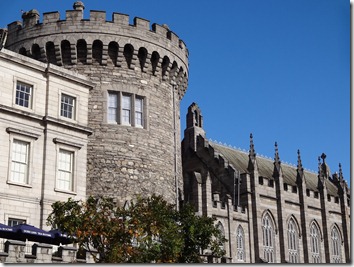
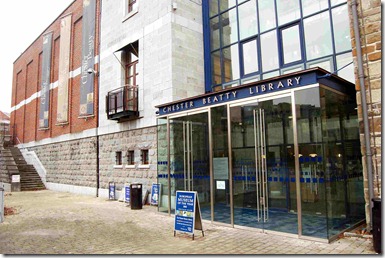
Of course the Chinese jade books, the early printed texts with Albrecht Durer’s Renaissance prints, the Spanish texts illustrated by Goya, the early elaborate leather-tooled bindings, the combining of words and visual art in general were all blow-one-away accomplishment, devotion, quality, and history captured. It was amazing.
Dublin, your spell will live forever in my bones.
Love,
Sandy


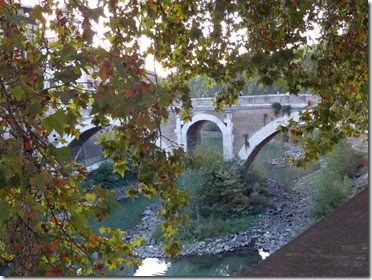
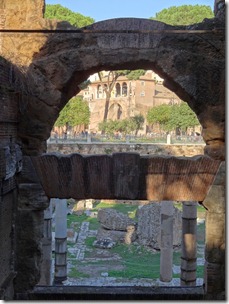
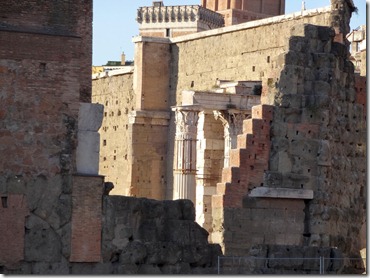

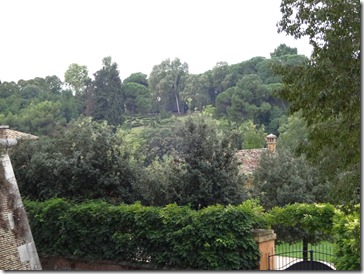
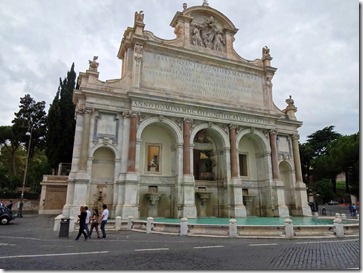
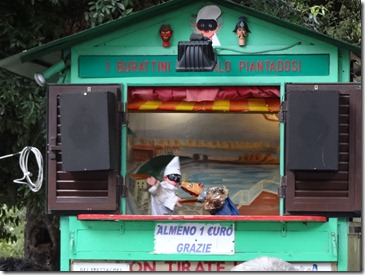
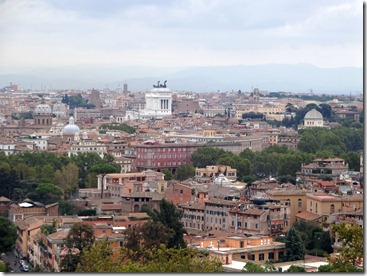
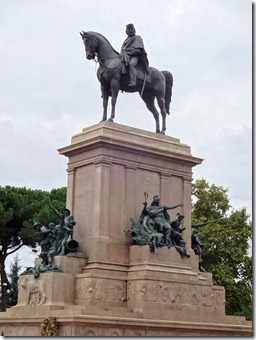
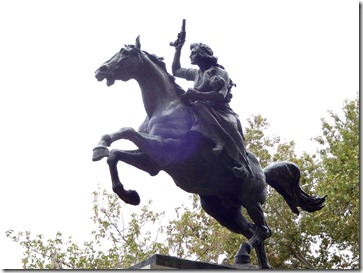
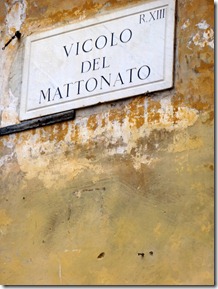 You may or may not remember that we have a food guru for Italy, Fred Plotkin. His outstanding book, Italy for the Gourmet Traveler, just opens up worlds of culinary appreciation for all regions of Italy. We had zeroed-in on a recommendation of his that turned out to be practically on the path out of Gianicolo Park!
You may or may not remember that we have a food guru for Italy, Fred Plotkin. His outstanding book, Italy for the Gourmet Traveler, just opens up worlds of culinary appreciation for all regions of Italy. We had zeroed-in on a recommendation of his that turned out to be practically on the path out of Gianicolo Park!